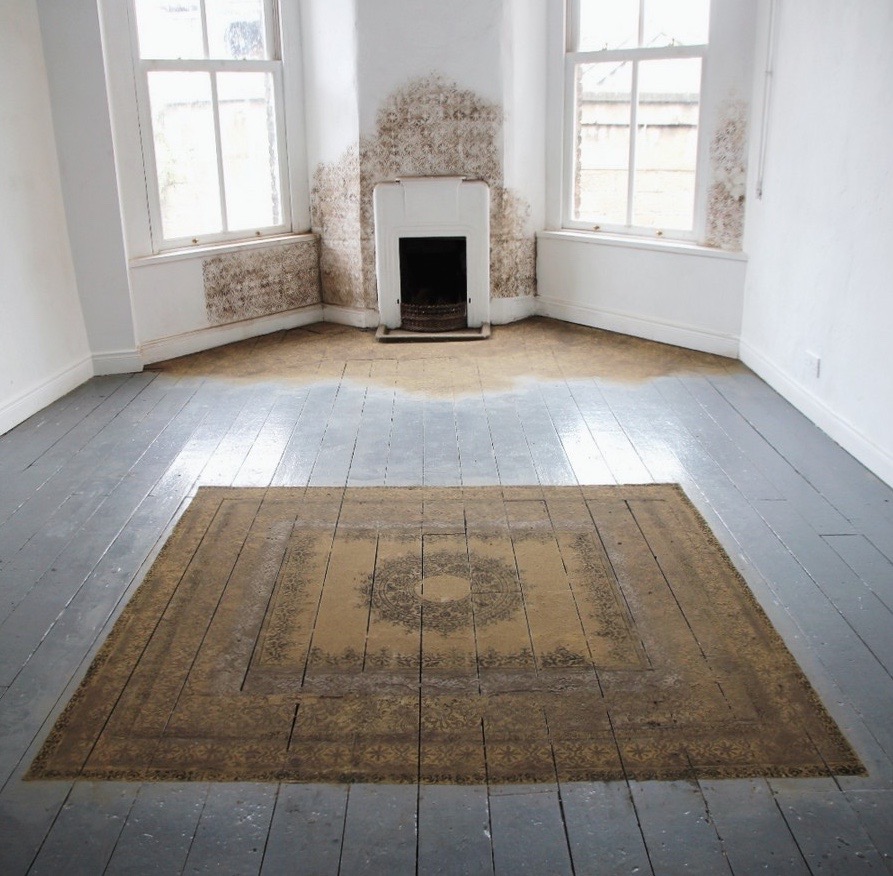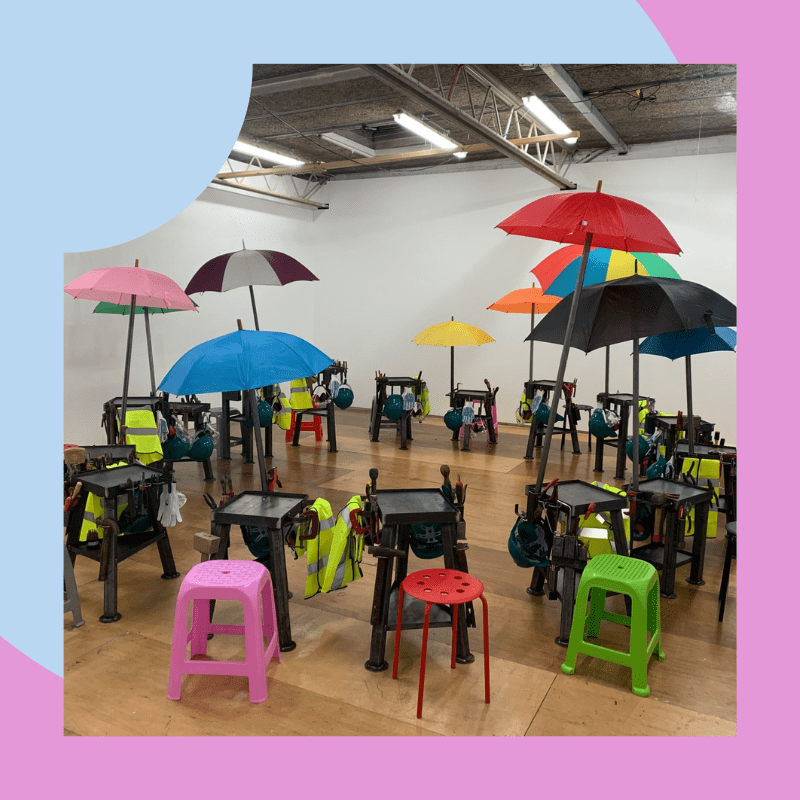
Congratulations on winning Zealous Stories: Sculpture! Your floor installation ‘The Fragile Texture of our Desires’ is entirely ephemeral in nature – what does this reference?
It’s a site-specific installation which explores themes of impermanence, cycles, traces and death, reminding us that we are all transient beings and that our bodies, along with the material world that surrounds us, are in a slow process of returning back to the dust from which we came. The installation’s temporary qualities mimic our own ephemerality, a preciousness that is constantly overlooked.

Your work is made from sifted dust, ash, dirt, bone and dried animal blood – It must have been incredibly time consuming to work with such unruly materials?
The process involved in the installation’s construction shares techniques and principles comparable to the meditative acts carried out by monks and similar spiritual groups. It’s made with a conscious awareness that it will ultimately be destroyed, allowing an acceptance and embracing of the inevitable. The materials subtly allude to the rituals and boundaries of ‘the body’. Within our own bodies, we carry the bodies of our ancestors and the immediate effects of their experiences, one lifetime passed to another, a history ready to be destroyed and remade. The ash and blood in particular are materials often used in ritualistic ceremonies and carry religious and spiritual connotations.

Your materials take on the form a rug – is this an example of materialising the familiar in an unfamiliar context?
A Persian style rug is an object that alludes to opulence, often found in stately homes or historic buildings. There is a contrast between the work’s form and the materials from which it’s constructed that reminds us of our own bodies, their animality and ability to decay.
The installation toys with the tension that lies between desire and disgust. It encourages the viewer to look beyond the surface of a familiar object and detach its stigma. Its sensitivity to change imposes a tentative approach. It’s perceived with caution and observed with the same unease as delicate subjects such as mortality and death, which are often tiptoed around or swept under the carpet.
The installation creates a new pattern out of unexpected materials. Similar to the carpet of dust, we too, are ephemeral creatures, ever able to change and reshape ourselves and our environment. Reminding us we are all transient beings, human and animal. The piece and its message are important in our time of excess desire, environmental and societal oppression.

One of the photographs depicts the sweeping away of the ash and the destruction of the installation – is this as much a part of the work as the installation in its complete form?
Absolutely, the work is created with the embedded awareness that it will ultimately be destroyed (or swept away). The process of both its construction and destruction feel almost performative at times, dealing with silence, time and ritual. The temporary nature of the piece encourages an acknowledgement of the present as it can only be observed in the current tense. The installation undergoes a change while it is being exhibited; the work becomes more focused on processes of change as the artwork itself is ephemeral. These changes are unpredictable and lie in the hands of the surrounding elements.

You mention that your practice deconstructs archaic identities and rebuilds new figures from detritus of the past, how is this manifested?
I often look at historical iconography and alter or subvert it through my practice in an attempt to understand or analyse it under a more contemporary light. In my previous work I’ve employed archaic references from the canon of art history and Western religion in an attempt to understand how society views our identities today. The Fragile Textures of our Desires pays closer attention to the patterns of the past both decorative and social. Pattern plays an important role in the work and is used as a descriptive device through which repetition, endlessness and a sense of a relentless cycle can be reconciled. The repetitive patterns delineated in the work mimic the machine-made prints that are churned out by manufacturers at a relentless pace, but at closer glance they are traces or remnants of time, a residue describing a former existence

You’ve achieved a great deal since graduating in 2015. What one piece of advice would you give to recent art graduates who want to kick-start their careers?
I went on to complete a Masters of Fine Art at Goldsmiths University which I graduated from last Summer. Re-entering the art scene can be daunting, but I believe if you remain motivated and consistent it will pay off. It’s important to remember that most artists experience as much or more rejection as they do success, picking yourself up and staying motivated when you feel defeated is the hard part but that failure is important for self growth and forming a tough skin. I’d like to think I’ve reached a stage where art has become less of a career and more like an extension of myself.
How have you stayed creative during lockdown?
I feel very fortunate to have been able to continue my practice from home and remain motivated throughout the pandemic. In ways, my practice is quite isolated at times, involving long hours in the studio alone, so solitude isn’t always necessarily a bad thing for me. I feel there is a certain level of catharsis existing in the ritual of my own practice that keeps me stimulated (and sane!) when times are strange and uncertain.
Let us know you want us to write more content like this with a love!
Share









